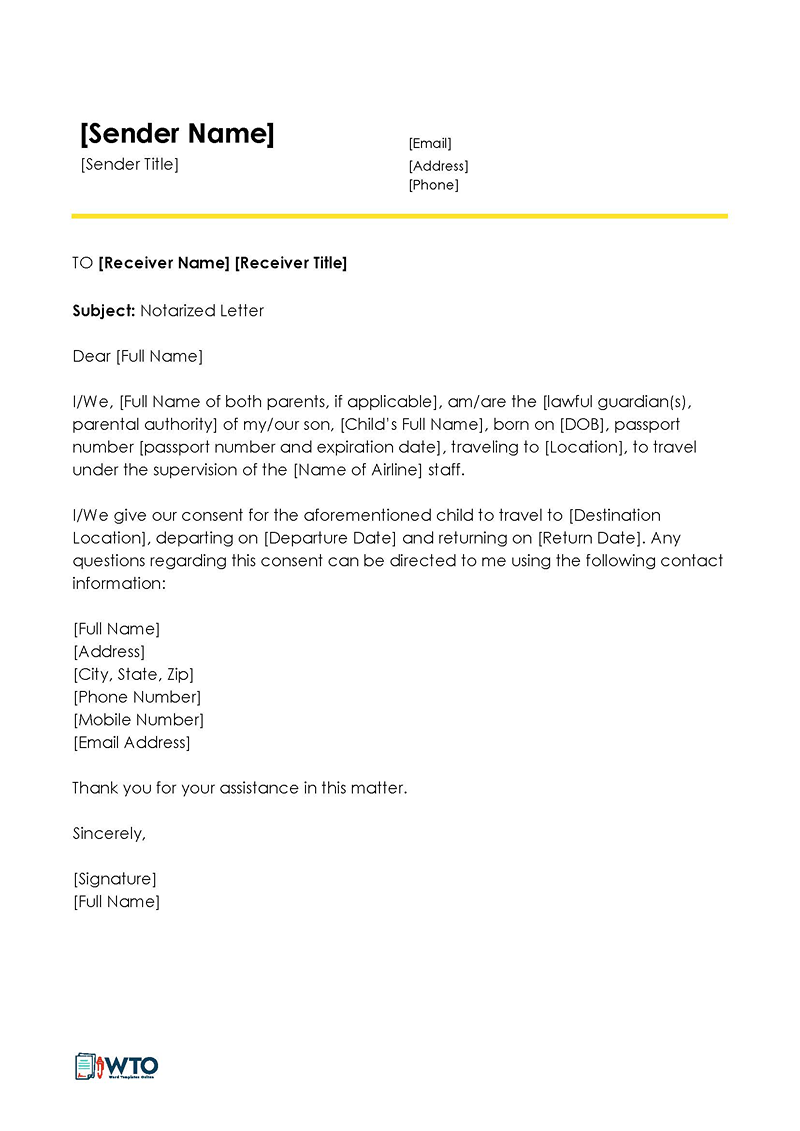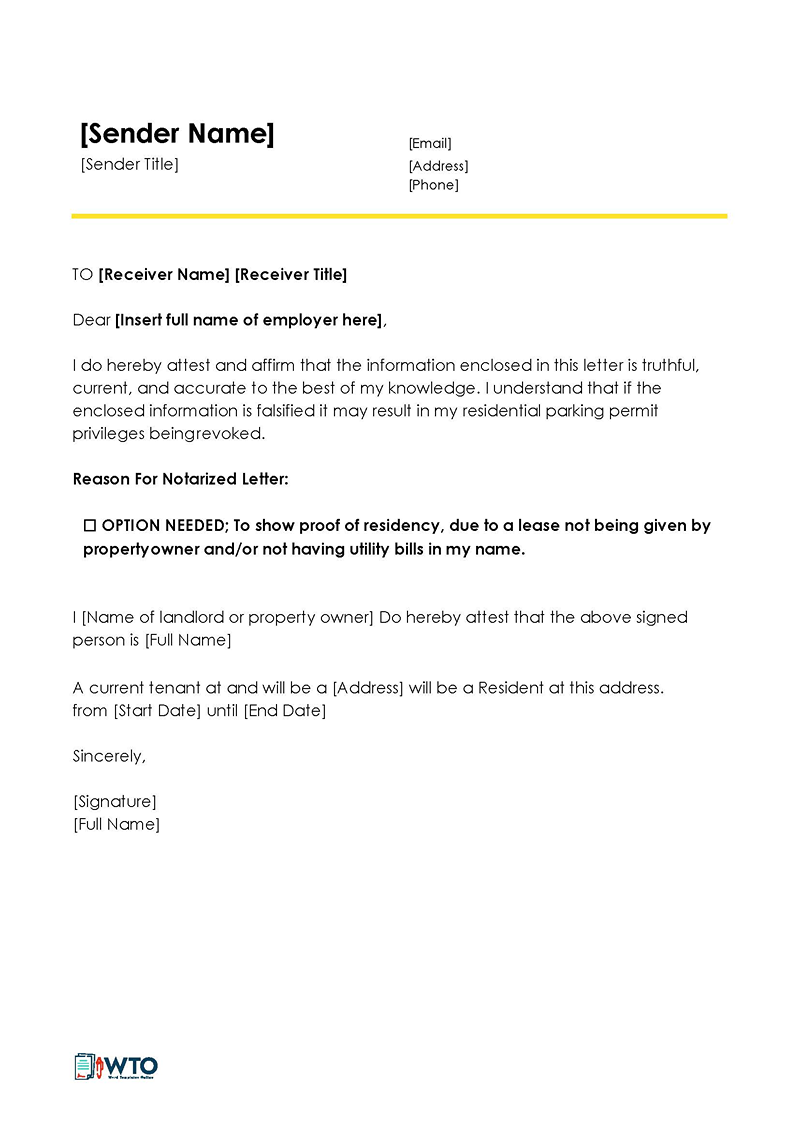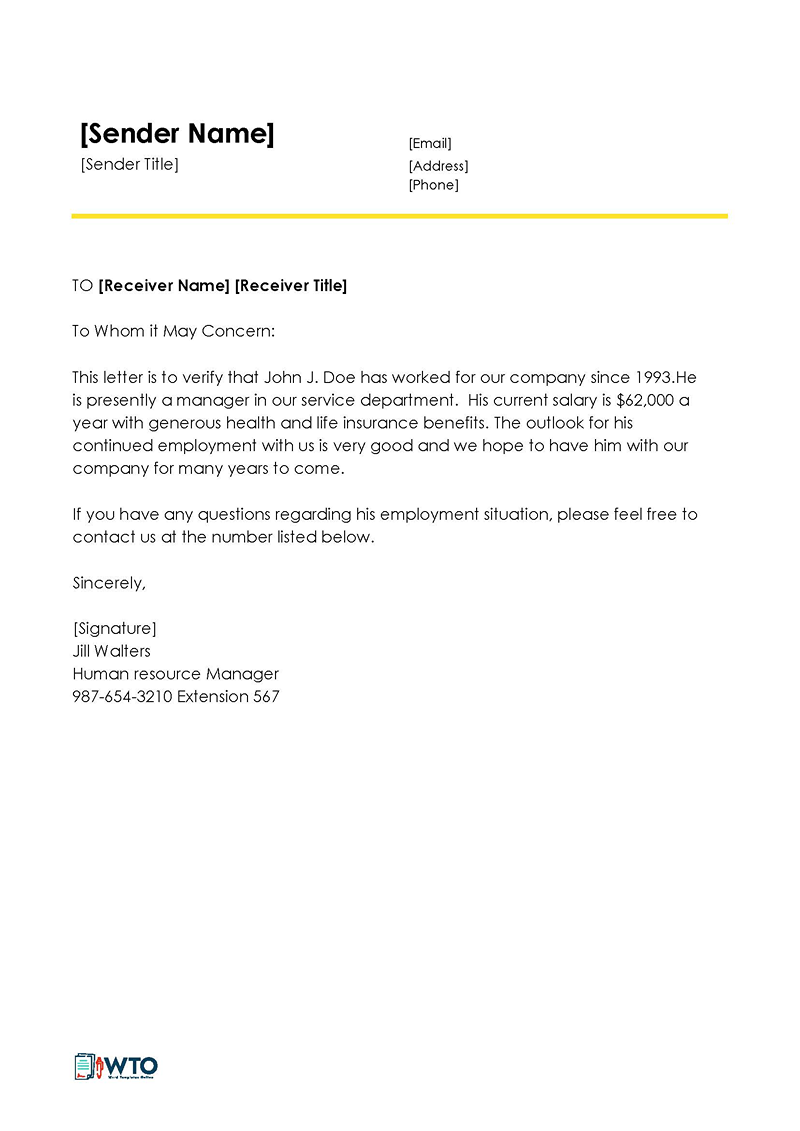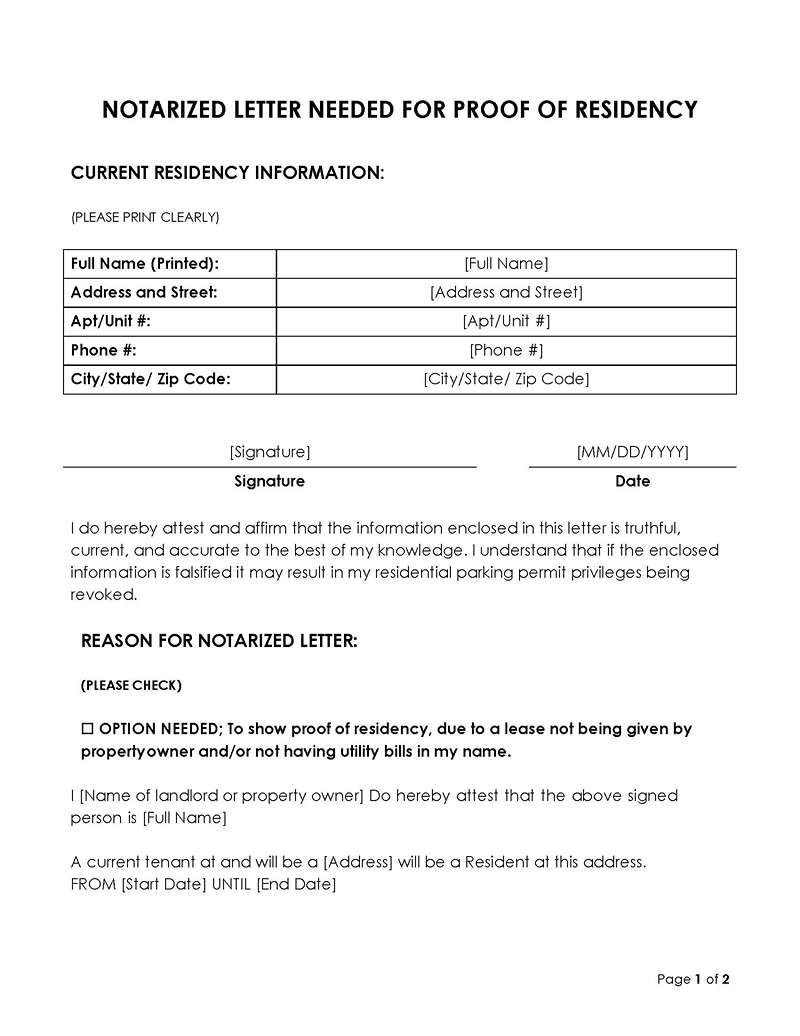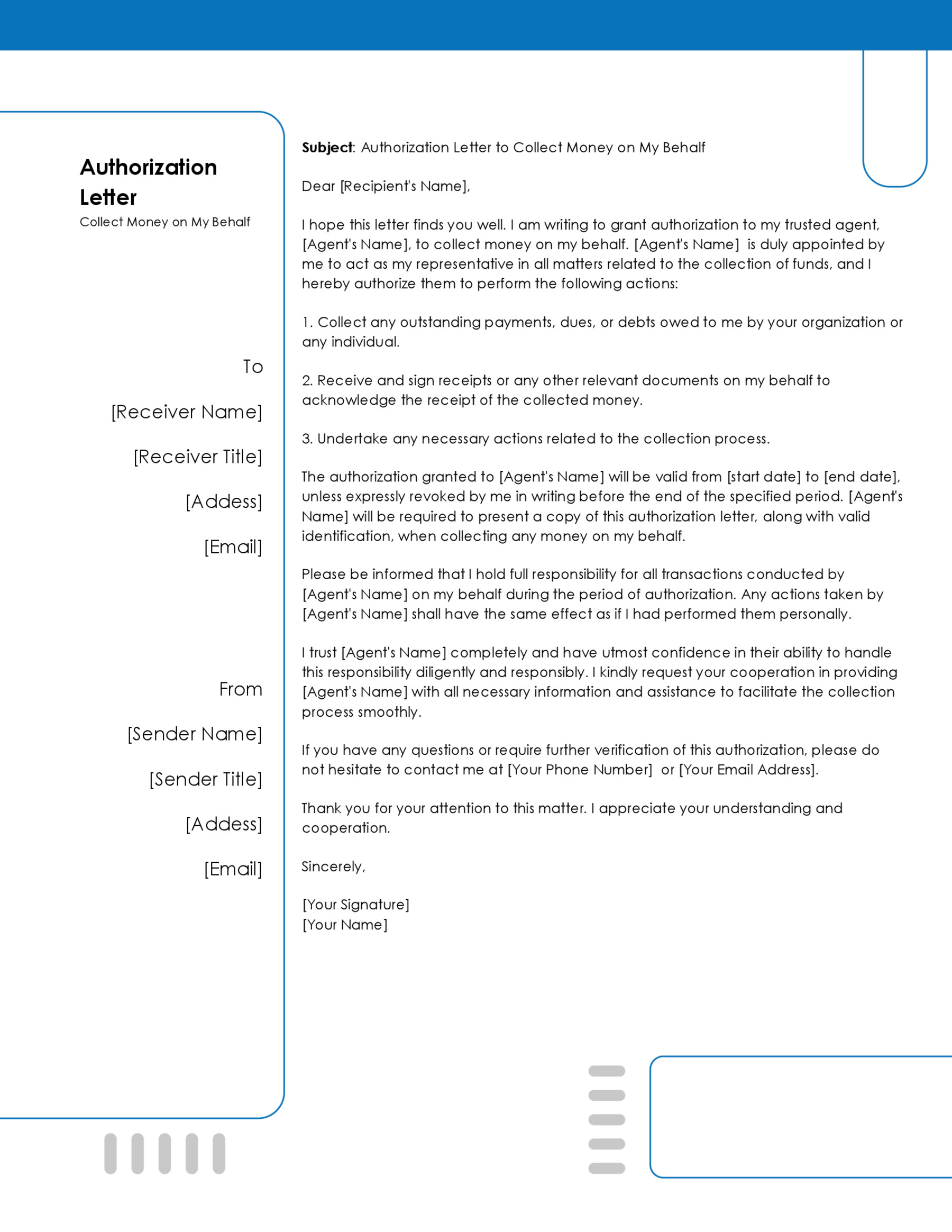A notarized letter is a document that has been certified by a notary public, a public official authorized to authenticate signatures and administer oaths.
Notarization adds an extra level of verification and credibility to the contents of the letter. A notary public performs notarization by verifying the signature and witnessing the signing of the document, which authenticates that the signatures were made of their own free will at the given location and date.
Notarized letters are often used in various situations, such as legal matters, business transactions, financial agreements, and government-related processes. They may be required to provide proof of identity, consent, authorization, or to confirm the veracity of statements made within the letter. With a notarized authority letter, you can instruct another individual to sign documents on your behalf or represent you in an official capacity. You can, for example, use a notarized letter to delegate authority to a junior officer to sign documents on your behalf.
This article provides templates for notarized letters, discusses their importance, and gives tips for writing effective letters. It also provides a guideline on how to get your documents notarized and gives examples of documents that may need this verification.
What is a Template for a Notarized Letter?
Templates, in the context of notarized letters, are pre-designed documents that provide a framework for drafting such letters. These templates outline the essential components of a notarized letter, including the sender’s information, the recipient’s information, the purpose of the letter, declaration statements, and space for signatures. By utilizing these templates, individuals can save time and effort by simply filling in the necessary details specific to their situation.
Free Templates
Given below are notarized letter templates:
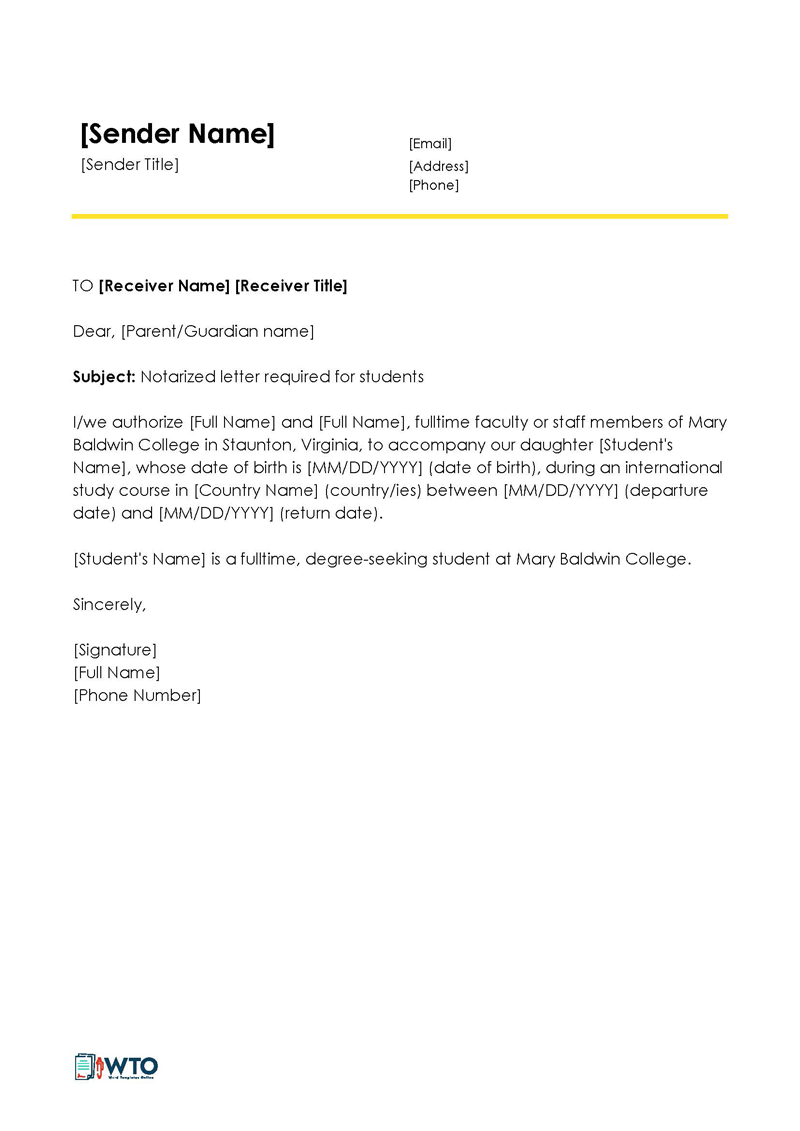
Importance of Having a Template for a Notarized Letter
As the documents that require notarization often have great significance, it is crucial to understand the importance of having a template for these letters to be able to draft them properly.
Using a template offers the following advantages:
Compliance
Templates ensure consistency in the format and content of notarized letters. They incorporate the essential components required in a legally recognized document, such as the sender’s information, the recipient’s information, declaration statements, and space for signatures. By using a template, you can be confident that your letter adheres to the necessary legal standards and guidelines.
Convenience
Templates can save you time and effort when creating a notarized letter by yourself. Since the essential components of the template are already outlined, you can easily prepare one, edit it, and save it for future reference.
Professionalism
If you work in a field that may require you to use notarized documents, it would be more convenient to have a standard template that can be used for all letters. Templates provide a standardized layout and language, giving your letter a polished appearance and conveying professionalism to the recipient and any involved parties.
Accuracy and completeness
Templates serve as a guide, prompting you to include all the relevant information and sections required in a notarized document. They often include pre-written phrases or language commonly used in such letters, ensuring that your message is conveyed accurately and professionally. They ensure that you will not overlook important details and that your letter is complete and comprehensive.
How to Get a Document Notarized: Step-by-Step Guide
If you need to have a letter notarized, it is essential to follow the correct procedure. This step-by-step guide will provide you with all the information you need to get your document notarized and help you easily navigate the process:
Find a licensed notary public
First, you must locate your preferred notary; these licensed professionals can be found in banks and courthouses. You can also conduct an online search to find someone suitable.
Schedule an appointment
Contact the notary public to schedule an appointment. Confirm their availability and inquire about any specific requirements or documents you need to bring.
Bring an unsigned document
Since the authentication process requires you to sign the letter in the notary’s presence, the document you carry should be unsigned. You may carry more than one copy if need be.
Provide your official identification
In addition to your signature, the notary often needs to verify your identity. Any government issued ID with a photograph is usually acceptable, like a driver’s license or passport. Therefore, you should bring these documents to your appointment. The identification documents should contain the same information as the document to be notarized.
Sign the letter in front of the notary public
Once the notary public confirms your identity, you should sign the letter in their presence. The official will then sign and stamp the letter with their official seal to confirm that they have verified your identity and signatures.
Pay the fee
All notaries charge a fee. Pay the fee as required. The fee may vary depending on the jurisdiction and the complexity of the document.
Receive the document
Once your letter is ready, the notary should give you the notarized document. They also keep a copy in case they need it for future reference.
Components of a Template for a Notarized Letter
While the purpose of your letter may vary, your template should contain the essential elements of a letter to be notarized. A comprehensive template should contain the following elements:
Title of the letter
Since they are written for different reasons, the titles of these documents vary. However, this section should accurately describe why you are writing it. If your letter authorizes an individual to travel with your child to another country, the title of your template should state this.
Pro tip: To make your template more effective, capitalize the title to reflect the contents and place it in the center of your document.
Heading
The template’s header should contain the recipient’s name, address, and date. The date is essential if you only provide authorization for a specific period. The names and addresses provided should be accurate.
Introduction
This section should be a brief but accurate description of the letter’s contents. It should begin with the appropriate salutation and describe why you are writing the letter.
The main content of the letter
After the introduction, explain why you are writing the letter. Suppose the letter is for consent for your child to travel out of the country. In that case, the template should have prewritten texts requesting specific details about the individual in charge of the child, the duration of the permission, and the purpose of the travel.
Supporting details and evidence
This section should build on the assertions made in the letter’s content. The supporting details and evidence you give will depend on your reason(s). These include documents, specific dates, and other details. As such, the template should include prompts to provide additional information relevant to the purpose of the letter.
Conclusion
At the end of the letter, include a declaration statement affirming the accuracy and truthfulness of the information provided. This statement indicates that you are making the statements in the letter under penalty of perjury.
Signature block
Leave sufficient space after the conclusion for your signature. Include your printed name below your signature to ensure clarity.
Notary statement
Include a standard notary statement, such as “Subscribed and sworn before me this [date] by [your name],” indicating that you appeared before the notary and signed the letter in their presence.
Additional notary information
Depending on the jurisdiction or specific requirements, you may need to include additional information such as the notary’s name, commission expiration date, and identification number.
Note: There are many ways to write a letter for notarization, like using templates or MS Word. You can search for and download various premade templates that you can customize to suit your needs. However, templates are more limited in comparison to MS Word, which allows you to prepare your letter in your preferred format. You can also always edit, save, and print the letter and keep a copy for future use.
Documents that May Require Notarization
As discussed, there are different reasons why you might need a notarized document. Some of the most common documents that require notarization include the following:
Proof of residency document
The primary purpose proof of residency document is to verify your place of residence. It is required when registering for schools, applying for visas, or participating in state programs. It contains your legal name, address, the signature of a witness or landlord, and the notary’s signature.
Notarized letter for SAM registration
A notarized letter may be required to identify the Entity Administrator of the business for SAM registration. Businesses use this letter to verify their identity. The letter is written by the business entity’s authorized representative. They have to provide specific details about the entity, including the legal business name and physical address.
Letter for child travel consent
Child travel consent letter is required when a child travels without one or both parents or guardians. It permits the individual traveling with the child to take the child across borders and states. The document should contain the name of the child, the parent or guardian giving consent, the name of the accompanying adult, the destination, and the travel date. Notarization confirms the identities of the accompanying adults and verifies that they are allowed to travel with the child.
Self-employment letter
This letter contains a statement that the individual is self-employed, highlighting information about their income, details of the business, and contact information and address.
Letter granting the power of attorney
This legal document allows an individual to perform certain acts on behalf of another. These documents have to be notarized because of their binding nature. The person delegating their authority is called the principal, while the person receiving the authority is called an agent/attorney-in-fact. These letters are utilized primarily in legal and succession matters. They contain the names of the principal and attorney-in-fact and their signatures. It should be notarized to be legally binding on the parties.
Letter for a notary statement
A letter for a notary statement is a document that includes a statement or declaration made under oath or affirmation and is signed in the presence of a notary public. The purpose of the letter is to certify the truthfulness and authenticity of the statements being made. The content of the letter can vary depending on the specific requirements or circumstances
Frequently Asked Questions
A notary public can notarize a letter. These are individuals licensed by the government to act as impartial witnesses to a matter. They can be called to verify the authenticity of their signed documents in case of any dispute.
There is no standard fee for notarization; the amount you pay varies depending on the jurisdiction and the type of document being verified. The average fee ranges from $0.25 to $20.
Yes, a handwritten letter can be notarized. However, it should contain all required elements, including the names, details, and signatures.
You can get your letter notarized at a bank, law firm, government office, shipping and postal centers, online and mobile notaries, or courthouse, where you can easily find a notary public.
Remote notarization, also known as online notarization or virtual notarization, is a process that allows individuals to have their documents notarized remotely using audio-visual technology and electronic signatures. It provides a convenient and secure alternative to traditional in-person notarization. In a remote notarization process, the signer and the notary public interact through a video conference platform, such as Zoom or Skype, instead of meeting physically.
